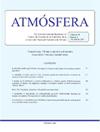气候变化对墨西哥主要、广泛分布的栎属植物的潜在分布的影响
IF 1
4区 地球科学
Q4 METEOROLOGY & ATMOSPHERIC SCIENCES
引用次数: 0
摘要
墨西哥温带森林是世界上生物多样性最强的森林之一。目前,它们面临着人为压力和气候变化。白栎是一种以树冠为主、分布广泛的物种,常见于这些生态系统的潮湿栖息地。其生态重要性、栖息地脆弱性和广泛分布使其成为墨西哥树木森林物种对气候变化脆弱性的有用模型。我们使用生态位模型来估计该物种未来的气候适宜性及其在两种排放情景和三个时间框架下的潜在范围变化。我们还确定了可能出现新气候的地区,以及应该谨慎解释预测的地区。此外,我们还分析了整个国家保护区系统的气候适宜性如何变化。在这两种排放情景中,气候条件合适的地区预计到2070年将净减少40%以上。这相当于超过100 000平方公里变得气候不适宜。在国家保护区,我们预计将收缩约30%。在高排放情景下(RCP 8.5),气候新颖性显著增加,占墨西哥温带山脉的10%,而RCP 4.5为1%。不与新气候相交的适宜性扩展区域发生在受土地利用变化和其他人为压力高度影响的区域。有效保护温带森林的树种,如Q.candicans,需要允许跨越海拔梯度的迁徙,因为预计稳定和气候适宜性扩大的地区将发生在山脉的高海拔地区。本文章由计算机程序翻译,如有差异,请以英文原文为准。
Effects of climate change on the potential distribution of a dominant, widely distributed oak species, Quercus candicans, in Mexico
Mexican temperate forests are among the most biodiverse in the world. At present, they face anthropogenic pressures and climatic changes. Quercus candicans is a canopy-dominant, widely distributed species common in the moist habitats of these ecosystems. Its ecological importance, habitat vulnerability, and wide distribution make it a useful model of the vulnerability of Mexican tree forest species to climate change. We used ecological niche modeling to estimate future climatic suitability for this species and its potential range shifts under two emissions scenarios and three-time frames. We also identified areas where novel climates could arise and where predictions should be interpreted cautiously. Additionally, we analyzed how climatic suitability could change across the national protected areas system. In both emissions scenarios, areas with suitable climatic conditions were predicted to experience a net reduction of more than 40% by 2070. This corresponds to more than 100 000 km2 becoming climatically unsuitable. In the national protected areas, we forecast a contraction of approximately 30%. Climatic novelty increased considerably in the higher emissions scenario (RCP 8.5), accounting for 10% of the Mexican temperate mountains, compared to 1% on RCP 4.5. Areas of expansion of suitability not intersected by novel climates occur in areas highly affected by land-use change and other anthropogenic pressures. Effective protection of temperate forests’ tree species such as Q. candicans would need to allow migrations across altitudinal gradients, as areas of stability and expansion of climatic suitability are forecasted to occur at higher altitude sections of mountain ranges.
求助全文
通过发布文献求助,成功后即可免费获取论文全文。
去求助
来源期刊

Atmosfera
地学-气象与大气科学
CiteScore
2.20
自引率
0.00%
发文量
46
审稿时长
6 months
期刊介绍:
ATMÓSFERA seeks contributions on theoretical, basic, empirical and applied research in all the areas of atmospheric sciences, with emphasis on meteorology, climatology, aeronomy, physics, chemistry, and aerobiology. Interdisciplinary contributions are also accepted; especially those related with oceanography, hydrology, climate variability and change, ecology, forestry, glaciology, agriculture, environmental pollution, and other topics related to economy and society as they are affected by atmospheric hazards.
 求助内容:
求助内容: 应助结果提醒方式:
应助结果提醒方式:


